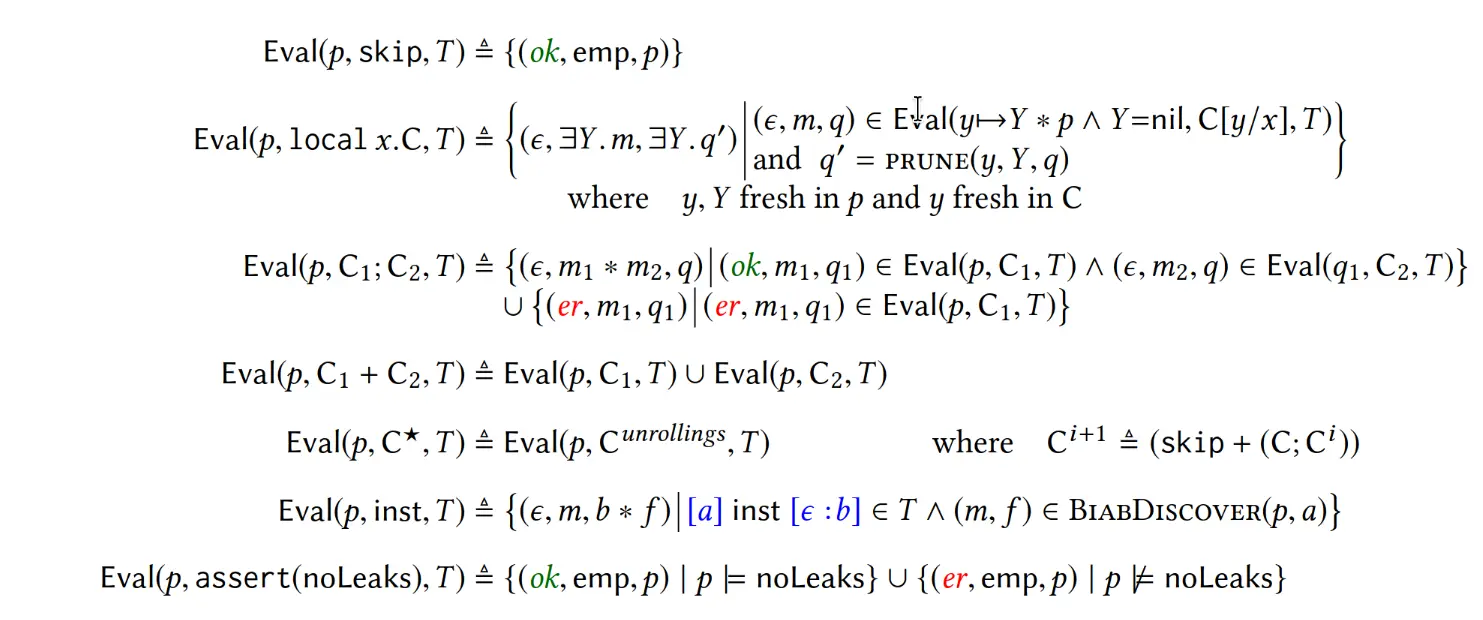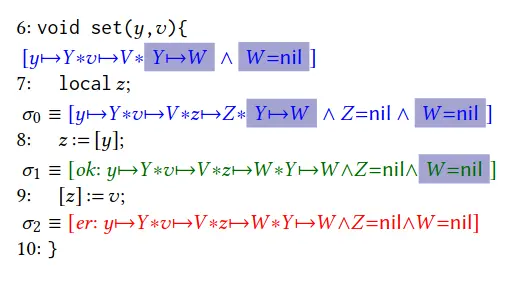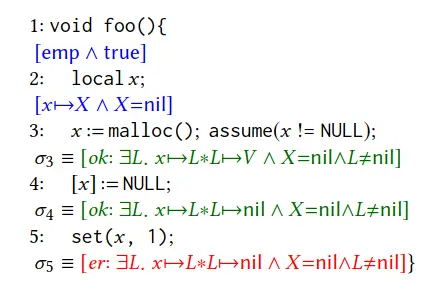OOPSLA’22, Finding real bugs in big programs with incorrectness logic
This paper proposes a static analysis method using Incorrectness Separation Logic, underpinned by bi-abduction technique.
Goal
Compute a set of function summary for each method , without any specification from the users.
Analysis
The static analysis in Pulse is a worklist-style forward Data-flow Analysis. Each control flow point is associated with a set of triples , which means ‘if is added to the precondition of the function, then holds at this point’.
The transfer function is represented by the Eval(p, C, T) function:

inst represents all other types of statements and function calls. contains all computed summaries for functions, and predefined IL triple for each instruction inst.
Bi-Abduction
Given a spec of next instruction , and the current precondition , the goal of bi-abduction is to synthesize and such that
is added to the post-condition, and propagated back to the precondition of the summary.
The method for bi-abduction is detailed in POPL’09 Compositional Shape Analysis by Means of Bi-Abduction
Reporting Errors
Given a set of summaries , in what circumstances do we report an error?
Obviously, only when it’s an error triple, i.e. . However, not all summaries are realized. It depends on the calling context.
- a manifest error denotes a valid summary that (1) can be applied within any calling context (i.e., regardless of the state at the call site); and (2) when applied, it always yields an erroneous execution terminating in a state satisfying an extension of q.
- Otherwise, it is a latent error.
We only report manifest error, except for memory leaks, which are considered problematic even if not triggered.
Example
For the following function, we start from the beginning of the method with . local z introduces a local variable.

The next statement has a predefined specification:
So we have to solve the bi-abduction
One solution is and . Here m is sent back to the precondition.
After some iteration we get the summary
This is a latent error, so we don’t report it.
Now consider a function calling set()

This time the context is irrelevant, therefore it’s a manifest error. This error is reported to the user.
Implementation
When implementing the analysis in Pulse, in addtional to bounded model checking, it also bound number of disjunctions in the formula. Otherwise, the analysis might not terminate (since the space is not finite).